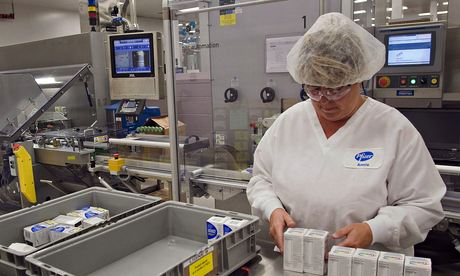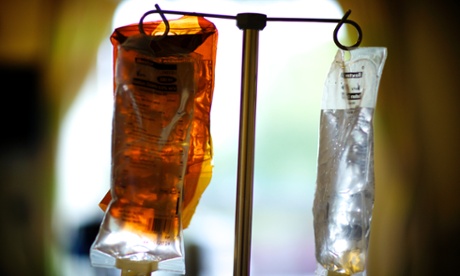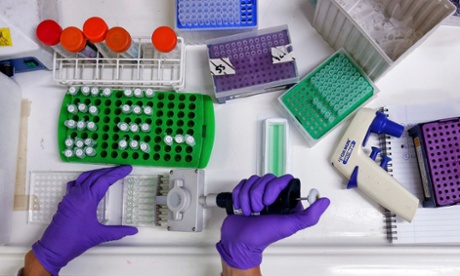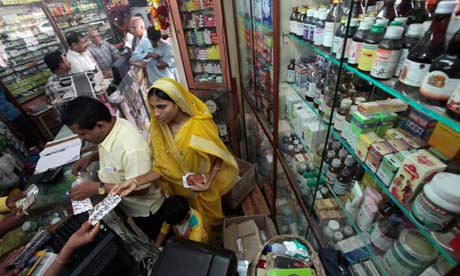In the battle between public science and anti-vaxxer sentiment, science is heavily outgunned writes Edward Luce in The FT
It is late October and Donald Trump has a surprise for you. Unlike the traditional pre-election shock — involving war or imminent terrorist attack — this revelation is about hope rather than fear. The “China virus” has been defeated thanks to the ingenuity of America’s president. The US has developed a vaccine that will be available to all citizens by the end of the year. Get online and book your jab.
It is possible Mr Trump could sway a critical slice of voters with such a declaration. The bigger danger is that he would deepen America’s mistrust of science. A recent poll found that only half of Americans definitely plan to take a coronavirus vaccine. Other polls said that between a quarter and a third of the nation would never get inoculated.
Whatever the true number, anti-vaccine campaigners are having a great pandemic — as indeed is Covid-19. At least three-quarters of the population would need to be vaccinated to reach herd immunity.
Infectious diseases thrive on mistrust. It is hard to imagine a better Petri dish than today’s America. Some of the country’s “vaccine hesitancy” is well grounded. Regulators are under tremendous pressure to let big pharma shorten clinical trials. That could lead to mistakes.
Vaccine nationalism is not just about rich governments pre-ordering as many vials as they can. It is also about winning unimaginably large bragging rights in the race to save the world. Cutting immunological corners could be dangerous to public health.
Such caution accounts for many of those who would hesitate to be injected. The rest are captured by conspiracy theories. In the battle between public science and anti-vaxxer sentiment, science is heavily outgunned. It faces a rainbow coalition of metastasising folk suspicions on both the left and the right. Public health messages are little match for the memology of social media opponents.
It is that mix of technological savvy and intellectual derangement that drives today’s politics. Mr Trump did not invent postmodern quackery — though he has endorsed some life-threatening remedies. The irony is that he could fall victim to the mistrust he has stoked.
Should an effective vaccine loom into view before the US goes to the polls in 95 days, Mr Trump would not be the ideal person to inform the country. The story is as old as cry wolf. Having endorsed the use of disinfectants and hydroxychloroquine, Mr Trump has forfeited any credibility. Validation should come from Anthony Fauci, America’s top infectious-diseases expert, whose trust ratings are almost double those of the president he serves.
Even then, however, the challenge would only just be starting. There is no cause to doubt the world-beating potential of US scientific research. There are good reasons to suspect the medical establishment’s ability to win over public opinion.
The modern anti-vaxxer movement began on the left. It is still going strong. It follows the “my body is my temple” philosophy. Corporate science cannot be trusted to put healthy things into our bodies. The tendency for modern parents to award themselves overnight Wikipedia degrees in specialist fields is also to blame.
Not all of this mistrust is madcap. African Americans have good reason to distrust public health following the postwar Tuskegee experiments in which hundreds were infected with syphilis and left to fester without penicillin. Polls show that more blacks than whites would refuse a coronavirus vaccine. Given their higher likelihood of exposure, such mistrust has tragic potential.
But rightwing anti-vaxxers have greater momentum. America’s 19th century anti-vaccination movements drew equally from religious paranoia that vaccines were the work of the devil and a more general fear that liberty was under threat. Both strains have resurfaced in QAnon, the virtual cult that believes America is run by a satanic deep state that abuses children.
It would be hard to invent a more unhinged account of how the world works. Yet Mr Trump has retweeted QAnon-friendly accounts more than 90 times since the pandemic began. Among QAnon’s other theories is that Covid-19 is a Dr Fauci-led hoax to sink Mr Trump’s chances of being re-elected. Science cannot emulate such imaginative forms of storytelling.
All of which poses a migraine for the silent majority that would happily take the vaccine shots. Their lives are threatened both by a pandemic and by an infodemic. It is a bizarre feature of our times that the first looks easier to solve than the second.
This week, Daily Telegraph readers have been astonished by revelations about the incompetent regulation of
implantable medical devices. This paper has clearly demonstrated
that patients are put at risk, because of flawed and absent legislation. But
many of these issues apply even more widely, to the regulation of all medicines,
and at the core is a scandal that has been shamefully
ignored by politicians.
The story is simple: drug companies can hide information about their drugs
from doctors and patients, perfectly legally, with the help of regulators. While
industry and politicians deny the existence of this problem, it is widely
recognised within medical academia, and meticulously well-documented. The
current best estimate is that half of all drug trials never get
published.
The Government has spent an estimated £500 million stockpiling Tamiflu to
help prevent pneumonia and death in case of an avian flu epidemic. But the
manufacturer, Roche, continues to
withhold vitally important information on trials of this drug from
the universally respected Cochrane Library, which produces gold-standard
summaries on medicines for doctors and patients. Nobody in the Department of Health or any regulator has
raised a whisper about this, though Roche says it has made “full clinical study
data available to health authorities around the world”.
In fact, while regulators should be helping to inform doctors, and protect
patients, in reality they have conspired with companies to withhold information
about trials. The European Medicines Agency, which now approves drugs for use in
Britain, spent more than three years refusing to hand over information to
Cochrane on Orlistat and Rimonabant, two widely used weight loss drugs. The
agency’s excuses were so poor that the European Ombudsman made a finding of
maladministration.
Even Nice, the National Institute for Health and Clinical Excellence, plays
along with this game. Sometimes chunks of its summary documents on the benefits
and risks of drugs are redacted, because data has only been shared by companies
under unethical “confidentiality agreements”. The numbers are blacked out in the
tables, to prevent doctors seeing the benefits from a drug in each trial; and
even the names of the trials are blacked out, as if they were code names for
Russian agents during the Cold War.
This is a perverse and bizarre situation to have arisen in medicine, where
decisions are supposed to be based on evidence, and where lack of transparency
can cost lives. Our weak regulations have been
ignored, and if we don’t act quickly, the situation will soon get
much worse. The European Medicines Agency’s sudden pledges of a new era of
transparency are no use: it has a track record of breaking such promises. We
need proper legislation, but the new Clinical Trials Directive, currently
passing through the European Parliament, does nothing to improve things.
Are you glazing over at the mention of European directives? This is where it all went wrong. Sunlight is the best disinfectant, but these issues have been protected from public scrutiny by a wall of red tape, while the people we trust to manage these complex problems have failed us. Regulators have lacked ambition. Politicians have ignored the issue. Journalists have been scared off by lobbyists. Worst of all, the doctors in medical membership bodies, the Royal Colleges and the Societies, even the patient groups – many of them funded by industry – have let us all down.
This must change. We need muscular legislation to ensure that all information about all trials on all currently used drugs is made available to doctors. We need the members of patient groups and medical bodies to force their leaders to act. And we need EU medicines regulators to be held to public account, for the harm they have inflicted on us.
Ben Goldacre is a doctor and author of 'Bad Pharma’ (4th Estate 2012)
Are you glazing over at the mention of European directives? This is where it all went wrong. Sunlight is the best disinfectant, but these issues have been protected from public scrutiny by a wall of red tape, while the people we trust to manage these complex problems have failed us. Regulators have lacked ambition. Politicians have ignored the issue. Journalists have been scared off by lobbyists. Worst of all, the doctors in medical membership bodies, the Royal Colleges and the Societies, even the patient groups – many of them funded by industry – have let us all down.
This must change. We need muscular legislation to ensure that all information about all trials on all currently used drugs is made available to doctors. We need the members of patient groups and medical bodies to force their leaders to act. And we need EU medicines regulators to be held to public account, for the harm they have inflicted on us.
Ben Goldacre is a doctor and author of 'Bad Pharma’ (4th Estate 2012)








 34 Comments
34 Comments 